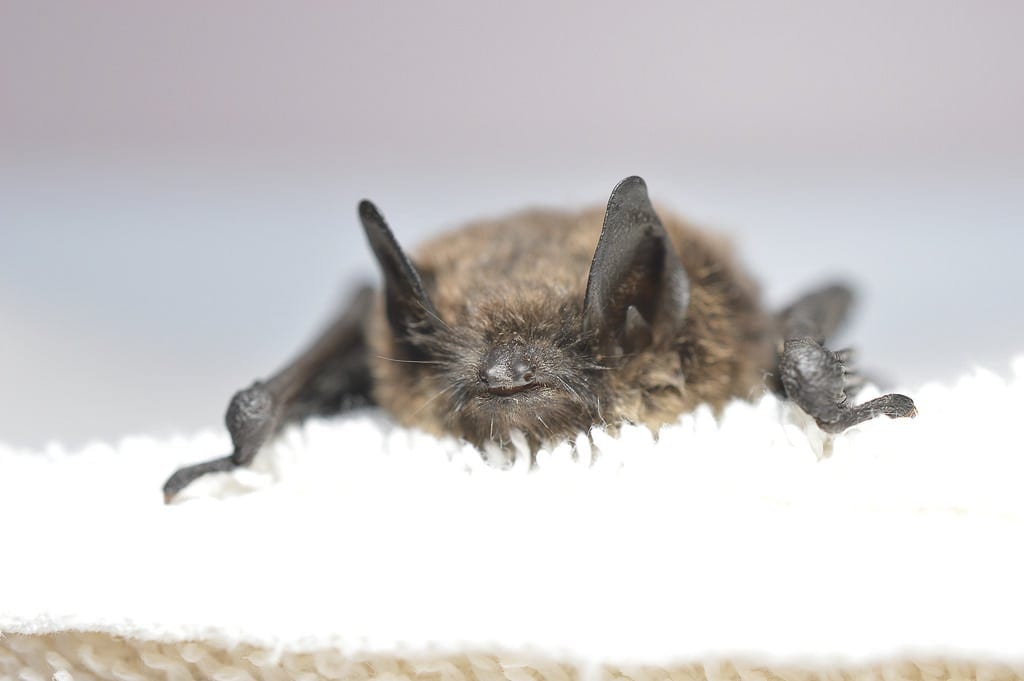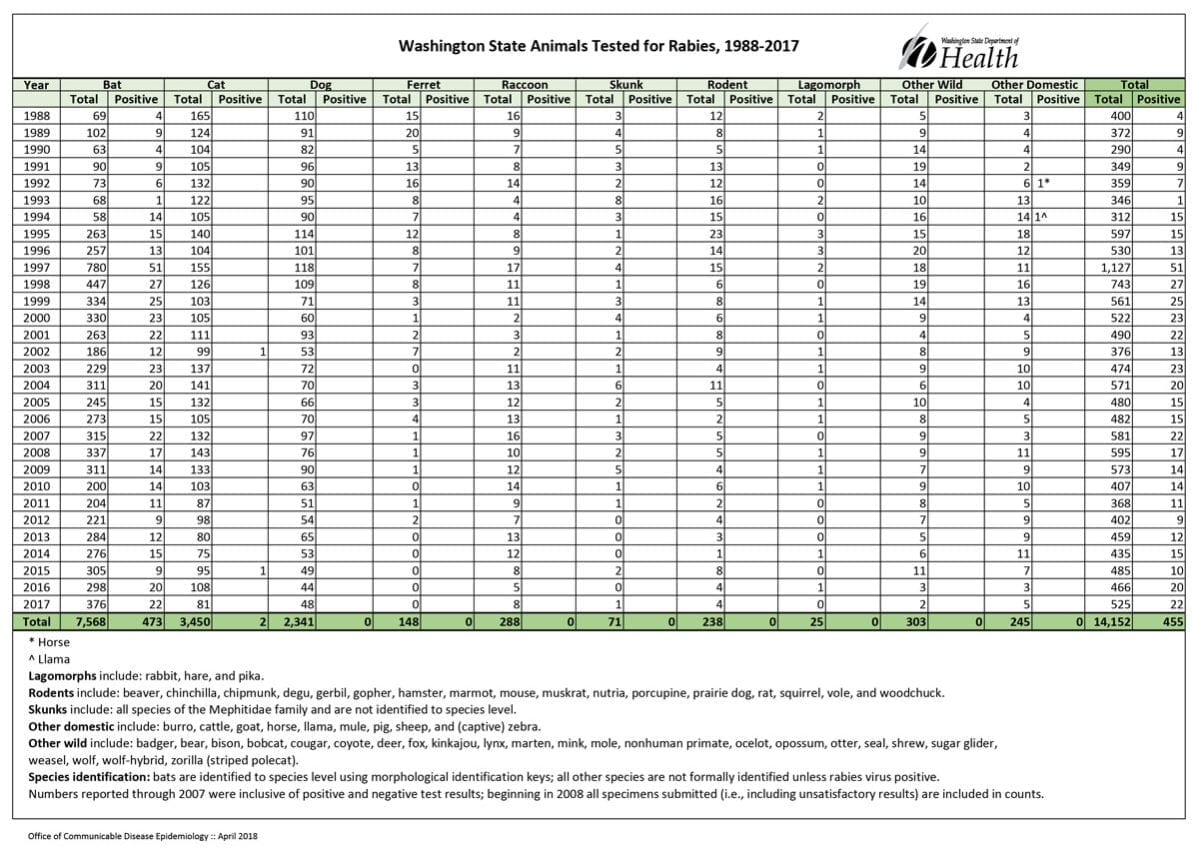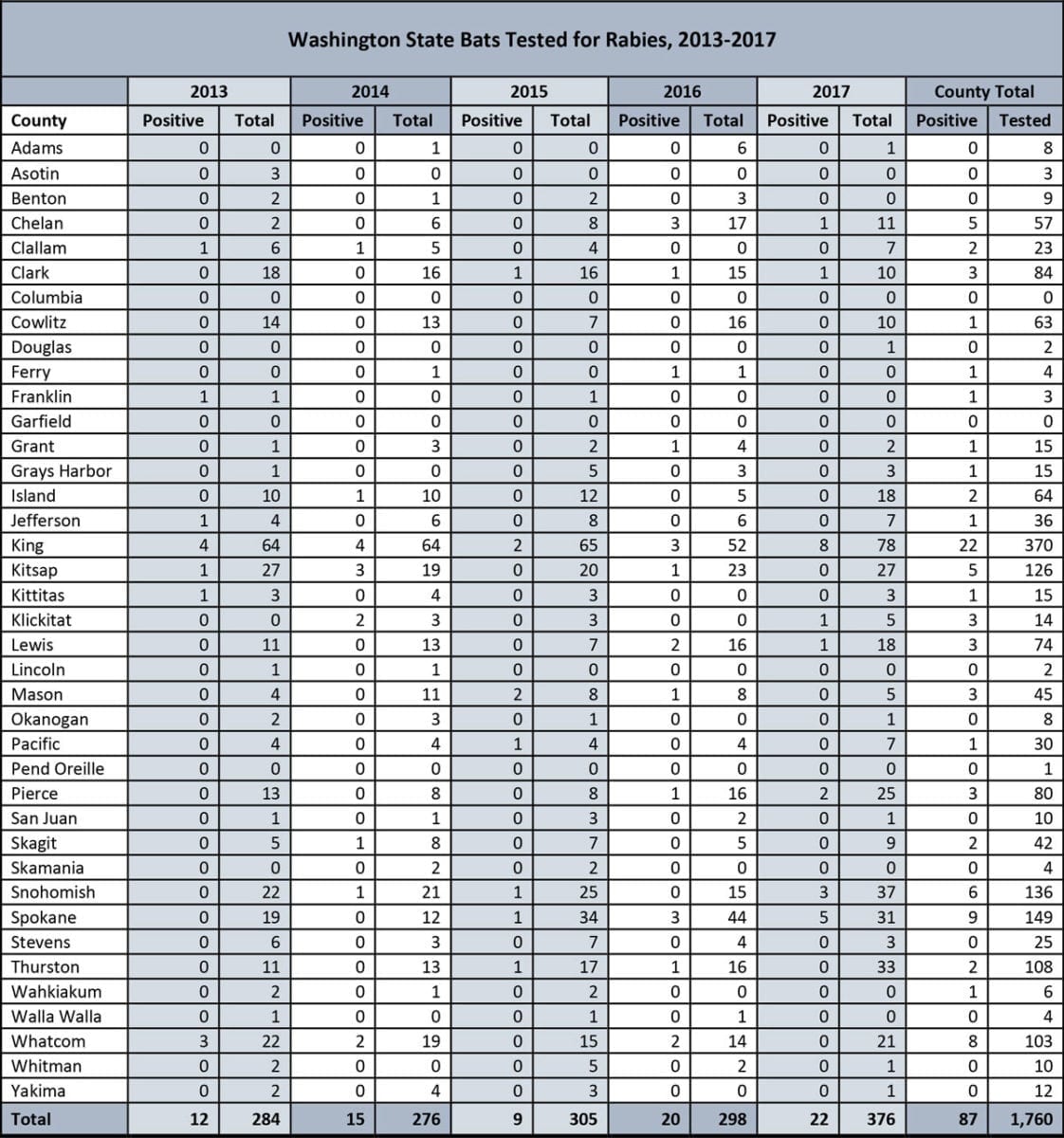Three bats collected in Clark County have tested positive for the deadly virus since 2015
The state Department of Health is warning residents of the danger of rabies as four bats found in Washington have tested positive for the deadly virus since May 1.
That’s the highest number identified in the state in the month of May since 1998, according to health officials

The bats were found in Snohomish, King and Chelan counties, but Clark County is no stranger to the virus. Bats tested positive after being found in Clark County in 2015, 2016 and 2017. There have been 84 bats tested for the virus in Clark County since 2014 with three positive results.
“Health officials routinely test for and find rabid bats, typically during the summer months,” according to a press release from the state. “(The Department of Health) wants the public to continue to take appropriate precautions if a bat – dead or alive – is found. Try to avoid contact with bats and other wild animals; do not touch a bat if possible. If you do have contact with a bat or suspect that a family member or pet had contact with a bat, try to safely capture it and keep it contained away from people and call your local health department for next steps.”
The Department of Health also warns that it is important to protect pets by ensuring their rabies vaccinations are current. More detailed precautions and information can be found on the Washington State Department of Health website.
While any mammal can be infected with the rabies virus, bats are the most common animal in Washington that carry rabies.
In 2017, 22 bats were tested and found to have the virus. That is up from 2016 when 20 rabid bats were identified. Washington State Public Health Laboratories tests between 200 and 300 bats per year. Typically, between three and 10 percent of the bats submitted for testing are found to be rabid.






